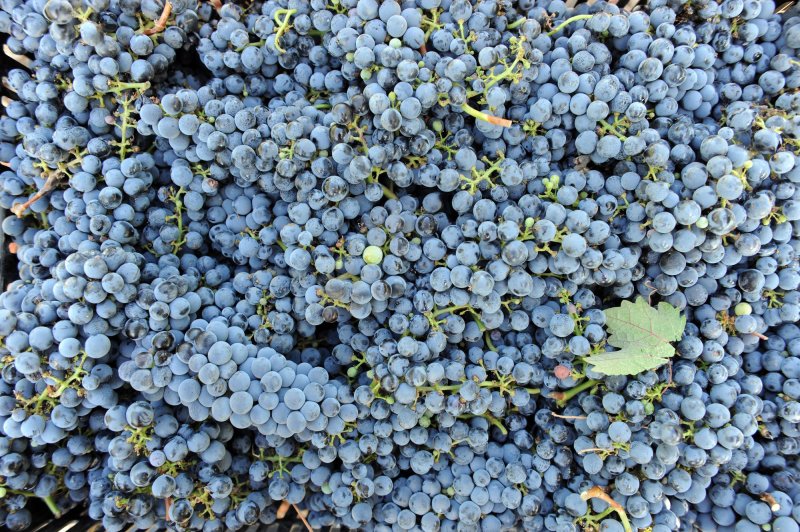A close-up of cabernet sauvignon grapes picked during the harvest, August 31,2010, in one of the vineyards of the Israeli Gush Etzion Settlement region in the West Bank. Boutique wineries in Israeli settlements are a growing trend for wine production and tourism in the West Bank. UPI/Debbie Hill |
License Photo
PALO ALTO, Calif., Jan. 17 (UPI) -- U.S. researchers say the future of wine-making hinges on developing news varieties of grapes and maps of the grape genome can help.
Scientists say disease is a constant problem for growers but new regulations are likely to curb the use of chemical treatments, so new disease-resistant grape varieties may be the way forward, the BBC reported Monday.
The grapes used in making the wines people like to drink have mainly been developed from one species, Vitis vinifera vinifera, probably "domesticated" about 5,000 years ago in or close to what is now Turkey, researchers say.
Vinifera has been teased into hundreds of varieties, red and white, but the grapes are all still members of the same species.
"Once we found good cultivars that were working for us, we adopted them and as a result they're sitting ducks for pathogens," Sean Myles, who led the study while at Cornell University, said.
Now at Stanford University, Myles and his colleagues have produced genomic maps of more than 1,000 samples, linking DNA to traits such as acidity, sugar content, or disease resistance.
Although business considerations tended to make wine-making a conservative profession, Myles said change must come.
"We can't just go on using the same cultivars for the next thousand years," he said.















